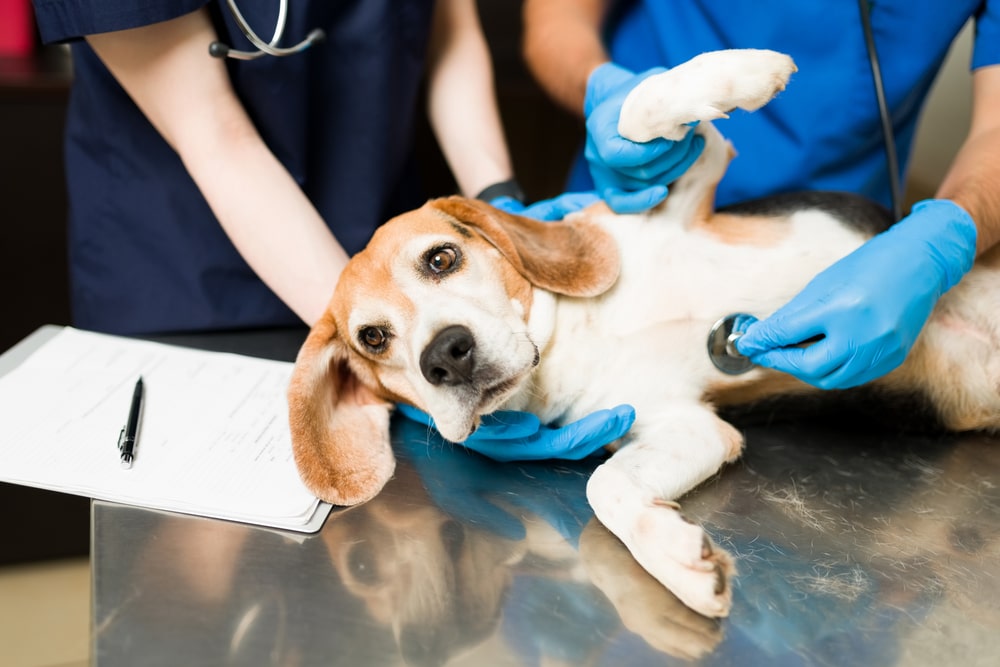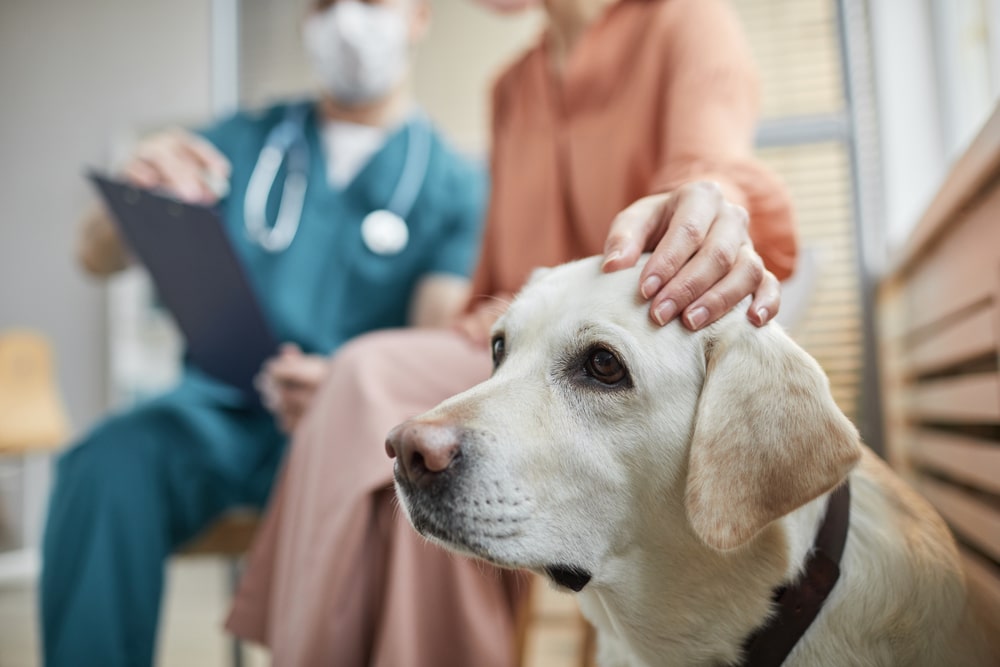While we can all agree puppies are adorable, you likely don’t want any unplanned litters. Spaying and neutering are surgeries that prevent dogs from having puppies by removing the uterus and ovaries in a female and the testicles in a male. But is it inhumane to spay or neuter your dog?
It is not inhumane to spay or neuter dogs. Having puppies is a huge commitment and should be left to professional breeders. Spaying and neutering your pets will allow you to avoid messy heat cycles that occur in intact (unspayed) females and help prevent the overpopulation of puppies. These surgeries can also help your pets live longer and reduce the risk of diseases such as breast cancer and pyometra (infection of the uterus) in females, and prostatitis (infection of the prostate) and testicular cancer in males. There are also behavioral benefits. As long as the procedure is performed by a licensed veterinarian with proper anesthesia and pain management, there is nothing inhumane about it.
Table of Contents
What Is A Spay/Neuter Surgery?

A spay, also known as an ovariohysterectomy, is a surgery to remove the uterus and ovaries in a female dog to prevent her from having puppies. Sometimes, veterinarians only remove the ovaries (known as an ovariectomy).
A neuter surgery, or castration, involves removing a male’s testicles so he cannot get a female pregnant. Another term for spaying or neutering is “fixing” your dog. Your vet can perform both of these surgeries, usually when your pet is around six months of age.
Benefits Of Spaying And Neutering Your Pets
If you are not planning to breed your dog, we highly recommend spaying or neutering them for multiple reasons such as:
- Increased life expectancy – On average, dogs who are spayed or neutered live 1.5 years longer than those who are not.
- Preventing the risk of certain medical conditions – Spaying a female will reduce her risk of developing mammary (breast) cancer and prevent her from developing pyometra (a very serious infection of the uterus). Neutering a male will prevent him from developing testicular cancer and reduce the risk of prostatitis (infection of the prostate).
- Improving behavior – Fixing your pet will help reduce incidents of aggression, roaming behavior, urine marking, and humping.
- Preventing overpopulation and unwanted puppies.
- Preventing messy heat cycle in females – Intact female dogs will have a heat cycle approximately every six months. During this time they will have a bloody vaginal discharge and may become pregnant if bred with a male.
What Does Surgery Involve?
Your vet’s surgical approach may vary based on their training and preferences, however, it will usually involve the following parts.
Pre-Operative Exam
Before performing surgery on your pet, your vet will want to make sure they are otherwise healthy. Not only will they ask you questions about how your dog has been doing at home, but they will also perform a thorough nose-to-tail physical exam and often check bloodwork to evaluate major organ function.
Anesthesia
During surgery your dog will be under general anesthesia, meaning it will be completely asleep and unable to move or feel pain. Your vet will also intubate them (place a breathing tube in their throat).
Each vet will have a slightly different protocol for anesthesia, but it will usually involve injectable premedication (pain medication and sedative) to relax them, injectible induction agent (to make them fall asleep), and inhalant gas anesthesia and oxygen delivered by the breathing tube to keep them asleep. They will likely receive intravenous fluids through a catheter during the procedure. An experienced technician or assistant will monitor their heart rate, respiratory rate, blood pressure, etc.
Once your dog is under anesthesia your vet will shave and prep/clean the surgical area, then move them to the surgical suite. Your vet will scrub their hands and put on a sterile gown and gloves.
When Spaying
Your vet will make an incision below your dog’s belly button through the skin and into the abdomen. Your vet will find and remove the ovaries and uterus. They will place ligatures (knots of suture (stitches)) to prevent bleeding when these tissues and associated blood vessels are removed. They will then use suture to close the incision in multiple layers. Depending on the size of your dog and the complexity of the surgery, this usually takes around 30 to 60 minutes.
When Neutering
Neutering dogs has several possible techniques. In a prescrotal technique, your vet will make an incision through the skin at the base of the penis just above the scrotum (skin that holds the testicles), and remove one testicle at a time through this incision. Ligatures will be placed to prevent bleeding when these tissues and associated blood vessels are removed. The veterinarian will then suture the skin closed. Depending on the size of your dog and the complexity of the surgery, this usually takes around 20 to 30 minutes.
If your dog is a cryptorchid (has an undescended testicle), then surgery will involve entering the abdomen to find the testicle and will be more complicated. It is especially important to neuter cryptorchid dogs. They have a high chance of developing cancer or torsion (twisting) in the undescended testicle.
Pain Management
Just like humans, dogs feel pain. In order to keep them as comfortable as possible, vets give them pain medication before and after surgery.
Recovery And What To Look For
While a spay is a bit more involved than a neuter (it involves entering the abdomen), both are generally outpatient surgeries meaning your dog will go home the same day. They may be groggy from the anesthesia for the rest of the evening.
Recovery time is approximately 10-14 days. During this time you will need to keep your dog quiet and not allow them to lick or chew at the incision. Your veterinarian will likely send your dog home with an E-collar and pain medication. Most vets use dissolving sutures buried under the skin, so they don’t have to remove them.
If you are concerned your dog is not doing well after their surgery, please contact your vet immediately. Concerning signs include lethargy, decreased appetite, vomiting/diarrhea, pale gums, collapse, difficulty breathing, distended abdomen, significant swelling, discharge, or bleeding from the incision site.
Risks Of Spaying And Neutering Your Pets
In the case of spaying and neutering your pets, vets will agree the benefits outweigh the risks. However, these are things to consider and discuss with your vet if you have any concerns.
- Anesthesia – Any time a pet goes under anesthesia there is a small risk. This can be minimized by ensuring they are healthy, using appropriate drugs and dosages, and having an experienced team member monitoring them during anesthesia and recovery.
- Surgical complications – Surgical complications are also a possibility anytime a dog goes under the knife. This includes things like infection, reaction to the drugs or suture used, slipping of ligatures leading to bleeding, etc. If a dog is in heat when she is spayed there may be more bleeding.
- Other medical conditions – Some orthopedic conditions and prostate cancer (in males) are slightly more common in spayed and neutered dogs. This is something that should be discussed with your vet, as the timing of surgery may make a difference, especially in giant breed dogs.
- Weight gain – Fixing your dog can lead to an increased risk of weight gain, however, this is easily avoided by monitoring the amount you feed them and their body condition score.
Conclusion: Is It Inhumane To Spay Or Neuter Dogs?
While there are risks to any surgical procedure, including a spay or neuter, veterinarians feel strongly the benefits outweigh the risks. And it is not inhumane to spay or neuter your dogs.
If you have questions or concerns about fixing your dog, please discuss them with your vet. These common surgeries are incredibly safe and effective and will help improve your pup’s life expectancy and well-being.
So, what’s got you curious about spaying and neutering dogs? Let us know your thoughts and why in the comments below!
